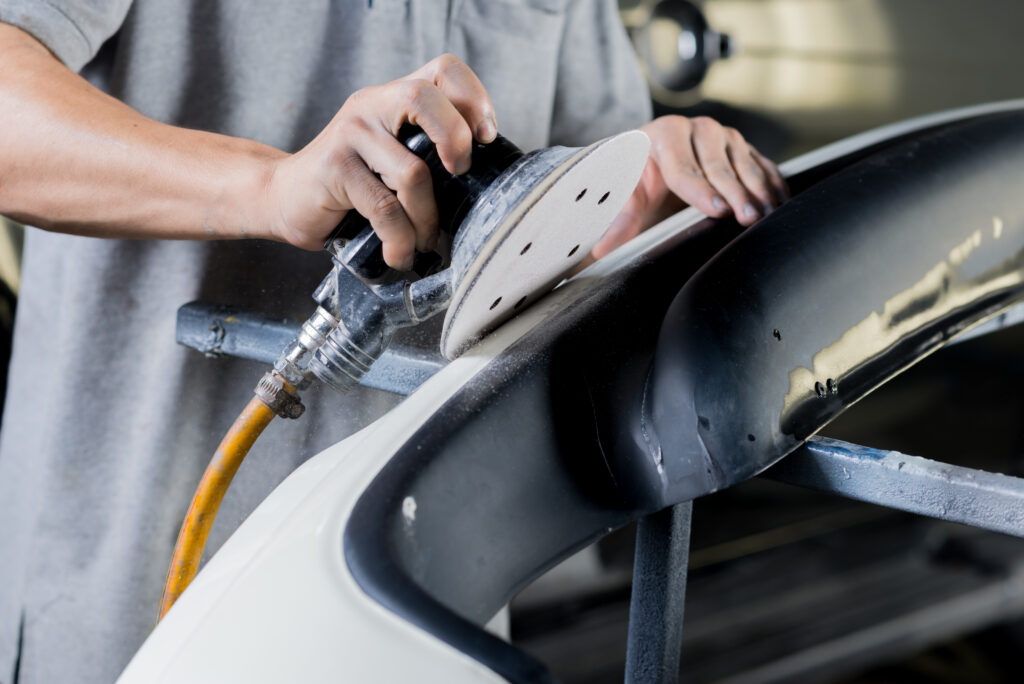Whether you’ve scratched the side of your car, or returned from buying groceries to find a dent on your bumper, your very first question after finding damage on your car is likely to be, “how do I get it fixed?”

But, once the initial shock has worn off, there are likely to be a few others. In fact, for many of our Bumpertek customers, our repair is the very first time they’ve come into contact with a mobile scratch repair service, and so there is plenty to inquire about.
Between trying to find the best solution that works for you, to practical queries on when you can drive your car after having a repair done – we’ve heard it all. To help save you time, we’re getting the info straight from the source, Bumpertek Owner and Operator, Michael Micallef, who is sharing the most frequently asked scratch repair questions.
FAQ 1: Can my car be fixed or does the panel need to be replaced?
Michael: This is, by far, the most common question I’m asked, and the answer will depend on the specific circumstances of the customer and the scratch itself.
First and foremost, I need to see the damage to determine if it can be fixed, which means I need to either see a clear image of the area or I schedule a consultation to view it personally. From there, I can make a quick assessment as to whether it’s a suitable repair or if it needs to be replaced – in which case I can refer the customer on to a panel beater.
The key determining factor is the type of damage. If it is a scratch, we can usually fix it. If it’s a bumper bar which is cracked, we can also fix it. However, if the issue is the bumper’s mounting tabs, it’ll need to be replaced.
The only other consideration is the customer’s interpretation of the outcome. If they want something that appears off the factory floor, they may prefer a replacement.
FAQ 2: What is the process?
Michael: For some customers, this is their first time coming into contact with a mobile scratch and bumper repair service. While they understand broadly what is involved, I often find they ask what the process for getting a repair is.
Luckily it’s pretty simple:
While it is relatively straightforward, there are a few extra details I like to add that customers might not be aware of:
- If the customer wants the repair work done in an enclosed area – such as a basement or car park – the paint fumes might linger for the immediate aftermath of the repair. While it’s not a big deal, it’s worth noting as they may not expect it.
- We are a ‘repair and respray’ service, not a brush service. While this means we provide a more invisible repair, it can be more expensive than a basic brush colour (where the damage remains visible even after the repair).

FAQ 3: Will the repair have a colour match?
Michael: We are always asked about colour matching and it makes sense – no one wants their repair work to stick out because the colour is wrong.
At Bumpertek, we use the latest colour matching from Sikkens to ensure the paint chosen matches your car. I use colour swabs matched them up against the car to ensure it’s the right colour and the right variation of that colour, and do all of my colour matching on site. The outcome of this process is that the colour will be matched well.
We’re excited too, to be launching a digital, computerised colour matching system, called Colour Spectra, in the coming weeks – think of a miniature version of the paint match system used at Bunnings.
FAQ 4: How long will a repair take?
Michael: Generally most repairs are done in 2 – 2 and a half hours. The drying time for the paint will take 3 hours after the repair is completed.
FAQ 5: When can I: drive it/wash it/polish it/get my ceramic coating reapplied?
Michael: I get asked this question a lot and it’s certainly one of the more important FAQs! After the repair, the paint needs at least 3 hours to cure, so it’s important to allow it to dry.
While it depends on the specific repair, in most circumstances, clients can drive their car after 3 hours, but we don’t recommend they touch the paint or repair site.
If they want to wash their car, we suggest waiting at least 12 hours, just to ensure the curing process is completed.
But, for customers who want to polish their cars, we recommend waiting a week. While it sounds strange, it’s a safe time to ensure the paint has aged or cured. When you’re washing a car with a sponge, you’re not putting pressure on the paint, but when you’re polishing, you’re putting your elbow into it! So we recommend a week, just in case.
Ceramic coating is another tricky one – it’s a type of protective, high-grade coating put on new paint. You can’t paint on ceramic coating, so I have to remove it in order to repair the car. Customers can then opt to have it put back on if they choose from a ceramic coating specialist.
Most customers don’t end up putting the ceramic coating back on – it’s usually removed from such a small area that it’s not necessary. But if they do, we’d suggest waiting a week to do so.
Is there anything else?
Michael: These are by far the most common questions I’m asked. But if anyone has any other questions or needs information specific to their circumstances, I’d always suggest they reach out directly. We’re here to help!